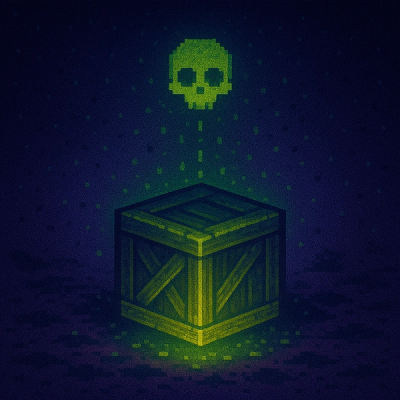= Ancestry
Ancestry is a gem/plugin that allows the records of a Ruby on Rails ActiveRecord model to be organised as a tree structure (or hierarchy). It uses a single, intuitively formatted database column, using a variation on the materialised path pattern. It exposes all the standard tree structure relations (ancestors, parent, root, children, siblings, descendants) and all of them can be fetched in a single sql query. Additional features are STI support, named_scopes, depth caching, depth constraints, easy migration from older plugins/gems, integrity checking, integrity restoration, arrangement of (sub)tree into hashes and different strategies for dealing with orphaned records.
= Installation
To apply Ancestry to any ActiveRecord model, follow these simple steps:
Your model is now a tree!
= Using acts_as_tree instead of has_ancestry
In version 1.2.0 the acts_as_tree method was renamed to has_ancestry in order to allow usage of both the acts_as_tree gem and the ancestry gem in a single application. To not break backwards compatibility, the has_ancestry method is aliased with acts_as_tree if ActiveRecord::Base does not respond to acts_as_tree. acts_as_tree will continue to be supported in the future as I personally prefer it.
= Organising records into a tree
You can use the parent attribute to organise your records into a tree. If you have the id of the record you want to use as a parent and don't want to fetch it, you can also use parent_id. Like any virtual model attributes, parent and parent_id can be set using parent= and parent_id= on a record or by including them in the hash passed to new, create, create!, update_attributes and update_attributes!. For example:
TreeNode.create! :name => 'Stinky', :parent => TreeNode.create!(:name => 'Squeeky')
You can also create children through the children relation on a node:
node.children.create :name => 'Stinky'
= Navigating your tree
To navigate an Ancestry model, use the following methods on any instance / record:
parent Returns the parent of the record, nil for a root node
parent_id Returns the id of the parent of the record, nil for a root node
root Returns the root of the tree the record is in, self for a root node
root_id Returns the id of the root of the tree the record is in
is_root? Returns true if the record is a root node, false otherwise
ancestor_ids Returns a list of ancestor ids, starting with the root id and ending with the parent id
ancestors Scopes the model on ancestors of the record
path_ids Returns a list the path ids, starting with the root id and ending with the node's own id
path Scopes model on path records of the record
children Scopes the model on children of the record
child_ids Returns a list of child ids
has_children? Returns true if the record has any children, false otherwise
is_childless? Returns true is the record has no childen, false otherwise
siblings Scopes the model on siblings of the record, the record itself is included
sibling_ids Returns a list of sibling ids
has_siblings? Returns true if the record's parent has more than one child
is_only_child? Returns true if the record is the only child of its parent
descendants Scopes the model on direct and indirect children of the record
descendant_ids Returns a list of a descendant ids
subtree Scopes the model on descendants and itself
subtree_ids Returns a list of all ids in the record's subtree
depth Return the depth of the node, root nodes are at depth 0
= Options for has_ancestry
The has_ancestry methods supports the following options:
:ancestry_column Pass in a symbol to store ancestry in a different column
:orphan_strategy Instruct Ancestry what to do with children of a node that is destroyed:
:destroy All children are destroyed as well (default)
:rootify The children of the destroyed node become root nodes
:restrict An AncestryException is raised if any children exist
:cache_depth Cache the depth of each node in the 'ancestry_depth' column (default: false)
If you turn depth_caching on for an existing model:
- Migrate: add_column [table], :ancestry_depth, :integer, :default => 0
- Build cache: TreeNode.rebuild_depth_cache!
:depth_cache_column Pass in a symbol to store depth cache in a different column
= (Named) Scopes
Where possible, the navigation methods return scopes instead of records, this means additional ordering, conditions, limits, etc. can be applied and that the result can be either retrieved, counted or checked for existence. For example:
node.children.exists?(:name => 'Mary')
node.subtree.all(:order => :name, :limit => 10).each do; ...; end
node.descendants.count
For convenience, a couple of named scopes are included at the class level:
roots Root nodes
ancestors_of(node) Ancestors of node, node can be either a record or an id
children_of(node) Children of node, node can be either a record or an id
descendants_of(node) Descendants of node, node can be either a record or an id
subtree_of(node) Subtree of node, node can be either a record or an id
siblings_of(node) Siblings of node, node can be either a record or an id
Thanks to some convenient rails magic, it is even possible to create nodes through the children and siblings scopes:
node.children.create
node.siblings.create!
TestNode.children_of(node_id).new
TestNode.siblings_of(node_id).create
= Selecting nodes by depth
When depth caching is enabled (see has_ancestry options), five more named scopes can be used to select nodes on their depth:
before_depth(depth) Return nodes that are less deep than depth (node.depth < depth)
to_depth(depth) Return nodes up to a certain depth (node.depth <= depth)
at_depth(depth) Return nodes that are at depth (node.depth == depth)
from_depth(depth) Return nodes starting from a certain depth (node.depth >= depth)
after_depth(depth) Return nodes that are deeper than depth (node.depth > depth)
The depth scopes are also available through calls to descendants, descendant_ids, subtree, subtree_ids, path and ancestors. In this case, depth values are interpreted relatively. Some examples:
node.subtree(:to_depth => 2) Subtree of node, to a depth of node.depth + 2 (self, children and grandchildren)
node.subtree.to_depth(5) Subtree of node to an absolute depth of 5
node.descendants(:at_depth => 2) Descendant of node, at depth node.depth + 2 (grandchildren)
node.descendants.at_depth(10) Descendants of node at an absolute depth of 10
node.ancestors.to_depth(3) The oldest 4 ancestors of node (its root and 3 more)
node.path(:from_depth => -2) The node's grandparent, parent and the node itself
node.ancestors(:from_depth => -6, :to_depth => -4)
node.path.from_depth(3).to_depth(4)
node.descendants(:from_depth => 2, :to_depth => 4)
node.subtree.from_depth(10).to_depth(12)
Please note that depth constraints cannot be passed to ancestor_ids and path_ids. The reason for this is that both these relations can be fetched directly from the ancestry column without performing a database query. It would require an entirely different method of applying the depth constraints which isn't worth the effort of implementing. You can use ancestors(depth_options).map(&:id) or ancestor_ids.slice(min_depth..max_depth) instead.
= STI support
Ancestry works fine with STI. Just create a STI inheritance hierarchy and build an Ancestry tree from the different classes/models. All Ancestry relations that where described above will return nodes of any model type. If you do only want nodes of a specific subclass you'll have to add a condition on type for that.
= Arrangement
Ancestry can arrange an entire subtree into nested hashes for easy navigation after retrieval from the database. TreeNode.arrange could for example return:
{ #<TreeNode id: 100018, name: "Stinky", ancestry: nil>
=> { #<TreeNode id: 100019, name: "Crunchy", ancestry: "100018">
=> { #<TreeNode id: 100020, name: "Squeeky", ancestry: "100018/100019">
=> {}
}
}
}
The arrange method also works on a scoped class, for example:
TreeNode.find_by_name('Crunchy').subtree.arrange
The arrange method takes ActiveRecord find options. If you want your hashes to be ordered, you should pass the order to the arrange method instead of to the scope. This only works for Ruby 1.9 and later since before that hashes weren't ordered. For example:
TreeNode.find_by_name('Crunchy').subtree.arrange(:order => :name)
= Migrating from plugin that uses parent_id column
Most current tree plugins use a parent_id column (has_ancestry, awesome_nested_set, better_nested_set, acts_as_nested_set). With ancestry its easy to migrate from any of these plugins, to do so, use the build_ancestry_from_parent_ids! method on your ancestry model. These steps provide a more detailed explanation:
-
Add ancestry column to your table
- Create migration: ./script/generate migration add_ancestry_to_[table] ancestry:string
- Add index to migration: add_index [table], :ancestry (UP) / remove_index [table], :ancestry (DOWN)
- Migrate your database: rake db:migrate
-
Remove old tree plugin or gem and add in Ancestry
- Remove plugin: rm -Rf vendor/plugins/[old plugin]
- Remove gem config line from environment.rb: config.gem [old gem]
- Add Ancestry to environment.rb: config.gem :ancestry
- See 'Installation' for more info on installing and configuring gems
-
Change your model
- Remove any macros required by old plugin/gem from app/models/[model].rb
- Add to app/models/[model].rb: has_ancestry
-
Generate ancestry columns
- In './script.console': [model].build_ancestry_from_parent_ids!
- Make sure it worked ok: [model].check_ancestry_integrity!
-
Change your code
- Most tree calls will probably work fine with ancestry
- Others must be changed or proxied
- Check if all your data is intact and all tests pass
-
Drop parent_id column:
- Create migration: ./script/generate migration remove_parent_id_from_[table]
- Add to migration: remove_column [table], :parent_id (UP) / add_column [table], :parent_id, :integer (DOWN)
- Migrate your database: rake db:migrate
= Integrity checking and restoration
I don't see any way Ancestry tree integrity could get compromised without explicitly setting cyclic parents or invalid ancestry and circumventing validation with update_attribute, if you do, please let me know.
Ancestry includes some methods for detecting integrity problems and restoring integrity just to be sure. To check integrity use: [Model].check_ancestry_integrity!. An AncestryIntegrityException will be raised if there are any problems. To restore integrity use: [Model].restore_ancestry_integrity!.
For example, from IRB:
stinky = TreeNode.create :name => 'Stinky'
$ #<TreeNode id: 1, name: "Stinky", ancestry: nil>
squeeky = TreeNode.create :name => 'Squeeky', :parent => stinky
$ #<TreeNode id: 2, name: "Squeeky", ancestry: "1">
stinky.update_attribute :parent, squeeky
$ true
TreeNode.all
$ [#<TreeNode id: 1, name: "Stinky", ancestry: "1/2">, #<TreeNode id: 2, name: "Squeeky", ancestry: "1/2/1">]
TreeNode.check_ancestry_integrity!
!! Ancestry::AncestryIntegrityException: Conflicting parent id in node 1: 2 for node 1, expecting nil
TreeNode.restore_ancestry_integrity!
$ [#<TreeNode id: 1, name: "Stinky", ancestry: 2>, #<TreeNode id: 2, name: "Squeeky", ancestry: nil>]
Additionally, if you think something is wrong with your depth cache:
TreeNode.rebuild_depth_cache!
= Tests
The Ancestry gem comes with a unit test suite consisting of about 1800 assertions in about 30 tests. It takes about 10 seconds to run on sqlite. To run it yourself, install Ancestry as a plugin into a Rails application, go to the ancestry folder and type 'rake'. The test suite is located in 'test/has_ancestry_test.rb'.
= Internals
As can be seen in the previous section, Ancestry stores a path from the root to the parent for every node. This is a variation on the materialised path database pattern. It allows Ancestry to fetch any relation (siblings, descendants, etc.) in a single sql query without the complicated algorithms and incomprehensibility associated with left and right values. Additionally, any inserts, deletes and updates only affect nodes within the affected node's own subtree.
In the example above, the ancestry column is created as a string. This puts a limitation on the depth of the tree of about 40 or 50 levels, which I think may be enough for most users. To increase the maximum depth of the tree, increase the size of the string that is being used or change it to a text to remove the limitation entirely. Changing it to a text will however decrease performance because an index cannot be put on the column in that case.
The materialised path pattern requires Ancestry to use a 'like' condition in order to fetch descendants. This should not be particularly slow however since the the condition never starts with a wildcard which allows the DBMS to use the column index. If you have any data on performance with a large number of records, please drop me line.
= Version history
The latest and recommended version of ancestry is 1.2.0. The three numbers of each version numbers are respectively the major, minor and patch versions. We started with major version 1 because it looks so much better and ancestry was already quite mature and complete when it was published. The major version is only bumped when backwards compatibility is broken. The minor version is bumped when new features are added. The patch version is bumped when bugs are fixed.
- Version 1.2.0 (2009-11-07)
- Removed some duplication in has_ancestry
- Cleaned up plugin pattern according to http://yehudakatz.com/2009/11/12/better-ruby-idioms/
- Moved parts of ancestry into seperate files
- Made it possible to pass options into the arrange method
- Renamed acts_as_tree to has_ancestry
- Aliased has_ancestry as acts_as_tree if acts_as_tree is available
- Added subtree_of scope
- Updated ordered_by_ancestry scope to support Microsoft SQL Server
- Added empty hash as parameter to exists? calls for older ActiveRecord versions
- Version 1.1.4 (2009-11-07)
- Thanks to a patch from tom taylor, Ancestry now works with different primary keys
- Version 1.1.3 (2009-11-01)
- Fixed a pretty bad bug where several operations took far too many queries
- Version 1.1.2 (2009-10-29)
- Added validation for depth cache column
- Added STI support (reported broken)
- Version 1.1.1 (2009-10-28)
- Fixed some parentheses warnings that where reported
- Fixed a reported issue with arrangement
- Fixed issues with ancestors and path order on postgres
- Added ordered_by_ancestry scope (needed to fix issues)
- Version 1.1.0 (2009-10-22)
- Depth caching (and cache rebuilding)
- Depth method for nodes
- Named scopes for selecting by depth
- Relative depth options for tree navigation methods:
- ancestors
- path
- descendants
- descendant_ids
- subtree
- subtree_ids
- Updated README
- Easy migration from existing plugins/gems
- acts_as_tree checks unknown options
- acts_as_tree checks that options are hash
- Added a bang (!) to the integrity functions
- Since these functions should only be used from ./script/console and not from your application, this change is not considered as breaking backwards compatibility and the major version wasn't bumped.
- Updated install script to point to documentation
- Removed rails specific init
- Removed uninstall script
- Version 1.0.0 (2009-10-16)
- Initial version
- Tree building
- Tree navigation
- Integrity checking / restoration
- Arrangement
- Orphan strategies
- Subtree movement
- Named scopes
- Validations
= Future work
I will try to keep Ancestry up to date with changing versions of Rails and Ruby and also with any bug reports I might receive. I will implement new features on request as I see fit. One thing I definitely want to do soon is some proper performance testing.
= Contact and copyright
Bug report? Faulty/incomplete documentation? Feature request? Please post an issue on 'http://github.com/stefankroes/ancestry/issues'. Please also contact me at s.a.kroes[at]gmail.com if it's urgent.
Question? Contact me at s.a.kroes[at]gmail.com, make sure you read the documentation. You can also join the #ancestry channel on IRC (irc.freenode.net).
Copyright (c) 2009 Stefan Kroes, released under the MIT license



